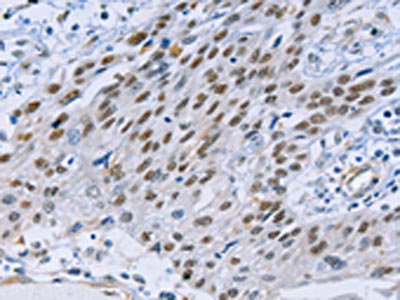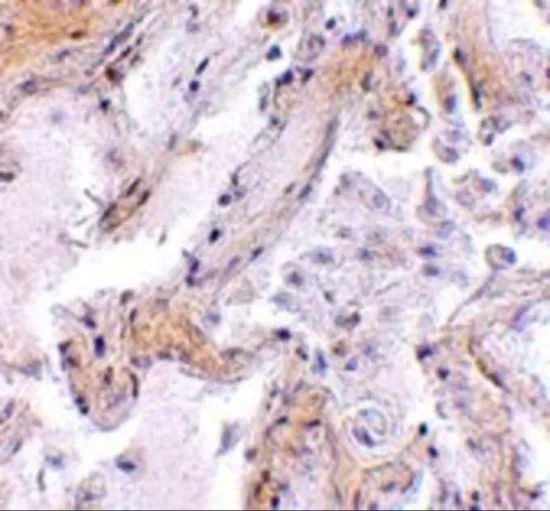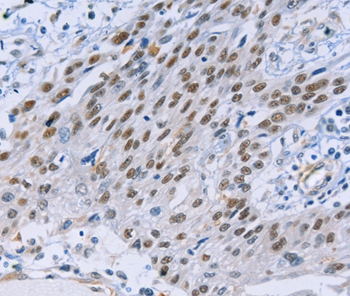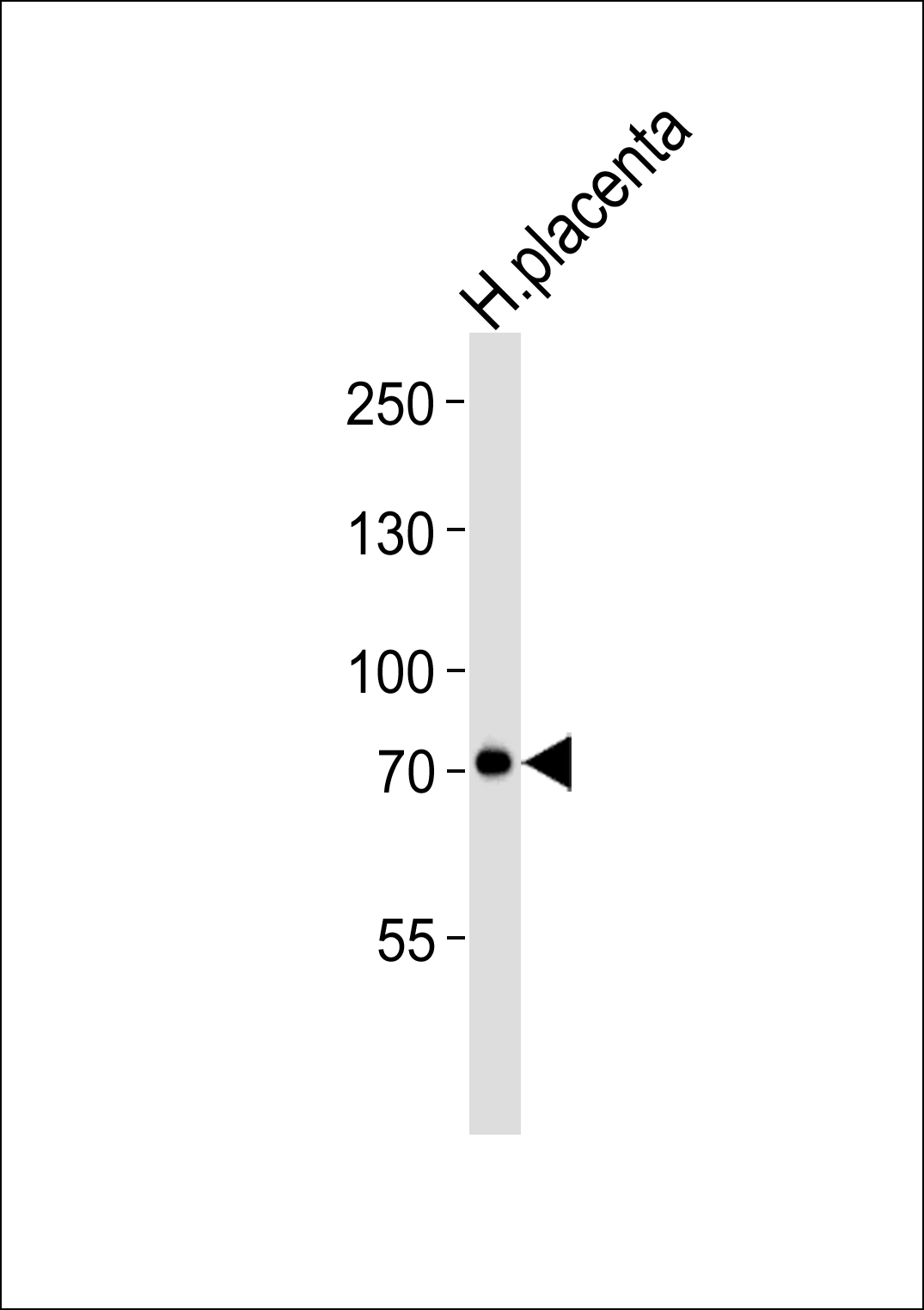
The image on the left is immunohistochemistry of paraffin-embedded Human esophagus cancer tissue using CSB-PA559356(CAPN6 Antibody) at dilution 1/15, on the right is treated with fusion protein. (Original magnification: x200)
CAPN6 Antibody
CSB-PA559356
ApplicationsELISA, ImmunoHistoChemistry
Product group Antibodies
ReactivityHuman, Mouse, Rat
TargetCAPN6
Overview
- SupplierCusabio
- Product NameCAPN6 Antibody
- Delivery Days Customer20
- ApplicationsELISA, ImmunoHistoChemistry
- CertificationResearch Use Only
- ClonalityPolyclonal
- ConjugateUnconjugated
- Gene ID827
- Target nameCAPN6
- Target descriptioncalpain 6
- Target synonymsCANPX, CAPNX, CalpM, DJ914P14.1, calpain-6, calpain-like protease X-linked, calpamodulin
- HostRabbit
- IsotypeIgG
- Protein IDQ9Y6Q1
- Protein NameCalpain-6
- Scientific DescriptionCalpains are ubiquitous, well-conserved family of calcium-dependent, cysteine proteases. The calpain proteins are heterodimers consisting of an invariant small subunit and variable large subunits. The large subunit possesses a cysteine protease domain, and both subunits possess calcium-binding domains. Calpains have been implicated in neurodegenerative processes, as their activation can be triggered by calcium influx and oxidative stress. The protein encoded by this gene is highly expressed in the placenta. Its C-terminal region lacks any homology to the calmodulin-like domain of other calpains. The protein lacks critical active site residues and thus is suggested to be proteolytically inactive. The protein may play a role in tumor formation by inhibiting apoptosis and promoting angiogenesis.
- ReactivityHuman, Mouse, Rat
- Storage Instruction-20°C or -80°C
- UNSPSC41116161






